A story about beautiful Taquile Island on Lake Titicaca. Virtually unchanged for the past 500 years and home to the famous male knitters.
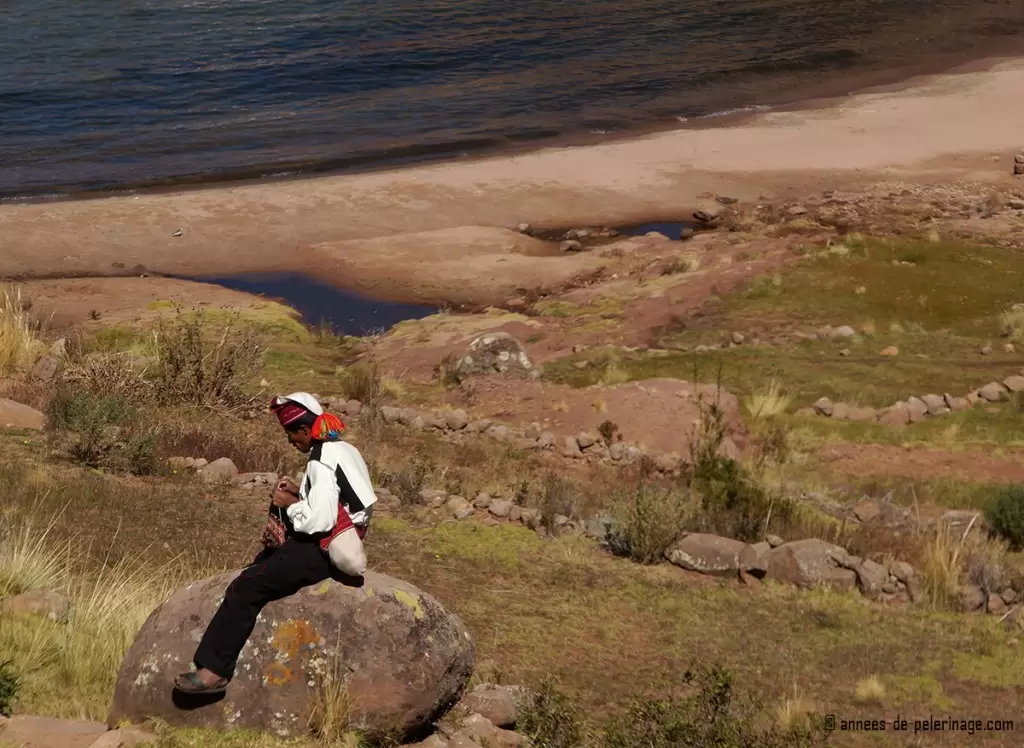
In the pristine blue waters of Lake Titicaca hides a tourist gem of unparalleled beauty – Taquile Island. The locals call it Intika in their native tongue, which is more than a footnote since most of the roughly 2,000 inhabitants of the small islands still speak Quechua, the ancient language of the Inca.
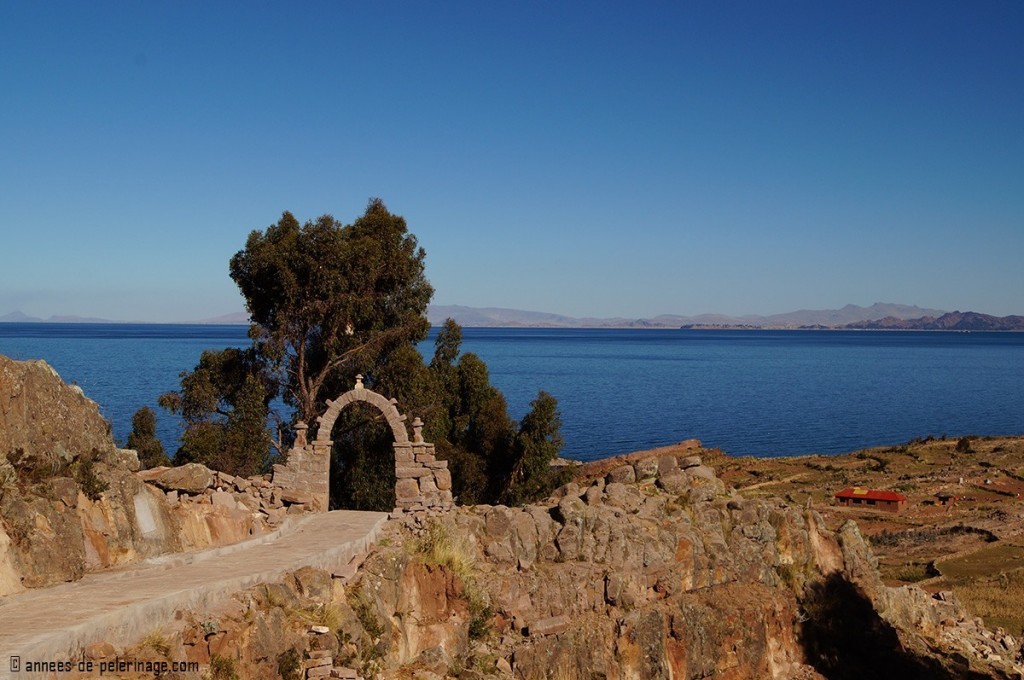
But things go further than that: The lifestyle on Taquile Islands hasn’t really changed for more than a thousand years. There is no electricity, no cars, and no pollution. The Taquileños produce all they need themselves and manage their island on an old Inca inspired community collectivism. The only thing that reminds you of darker days is their clothing.
Back when the Spaniards defeated the Inca, they forced the inhabitants of the rustic island to wear what passed as “civilized clothing” in their mind. But that too belongs to history now. In fact, the UNESCO proclaimed the resulting handwoven and handknitted textile tradition from that conflict Masterpieces of the Oral and Intangible Heritage of Humanity in 2005. Yet most tourists to Peru overlook Taquile. Let’s see if I can convince you to visit!
____________________
Just as beautiful and only a couple of miles away. Check out my story about the amazing Amaru Muru, the gigantic spiritual doorway of the Inca.
The boat trip to Taquile Island
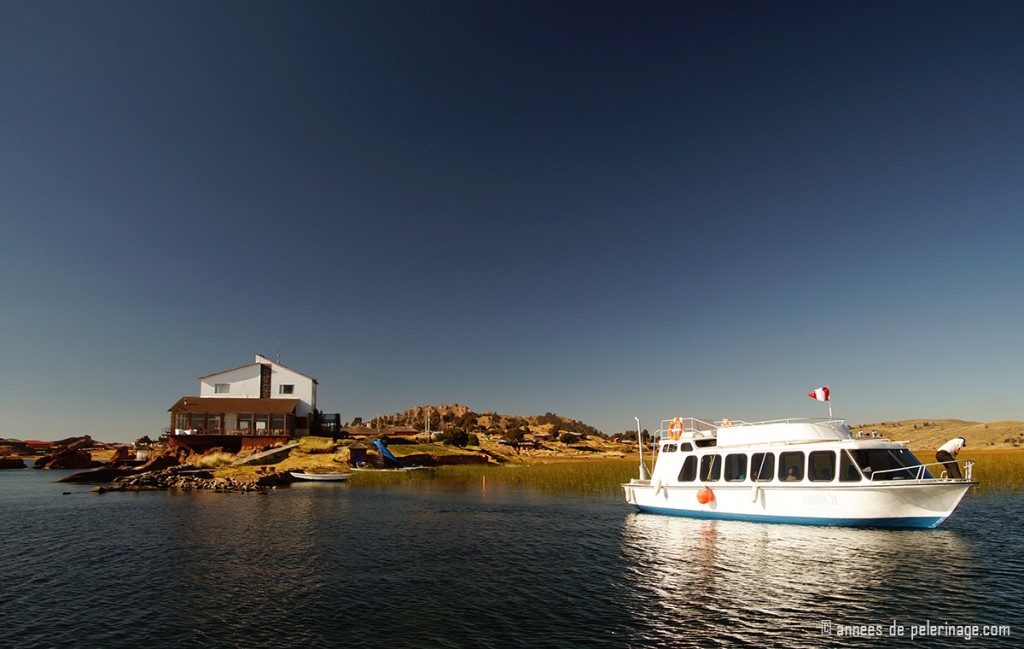
Taquile is a very remote island, but it is not altogether inaccessible. Still, if you go there you either got relatives or you are a tourist. I’m most decidedly of the latter kind, so my adventure starts on a private boat anchored directly in front of my hotel (Read my review of the Titilaka Luxury Lodge here; the picture above). From Puno, I’ve heard, there is a collective ferry leaving every day in the morning around 7:30 and probably some tourist companies offering guided day tours as well.
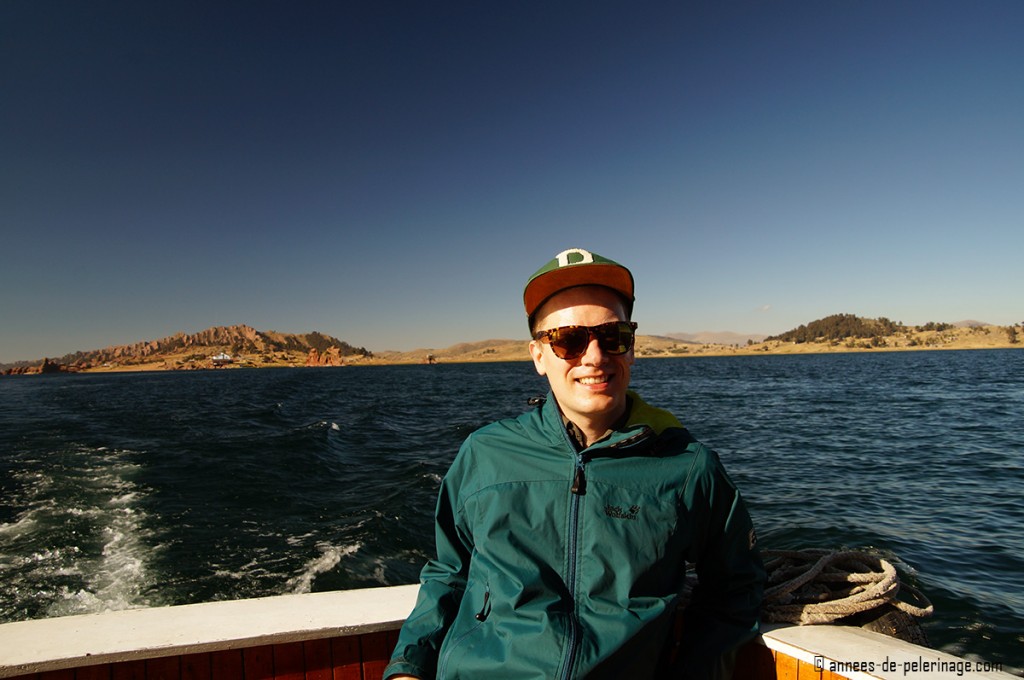
No matter which way you arrive on Taquile Islands, it will be by boat and the ride on 3.810 meters high Lake Titicaca itself will be worth your time. The sun is very intense and gives all colours this surreal intensity. To tell the truth, I had been visiting the magnificent floating reed islands of the Uros people the day before, but the boat trip is not less exciting despite the repetition. Perfect blue skies, the most gentle breeze and a landscape so serene it’s almost spiritual – it really makes you forget the water is only 10 to 15 degrees warm. Sadly Lake Titicaca is not meant for bathing.
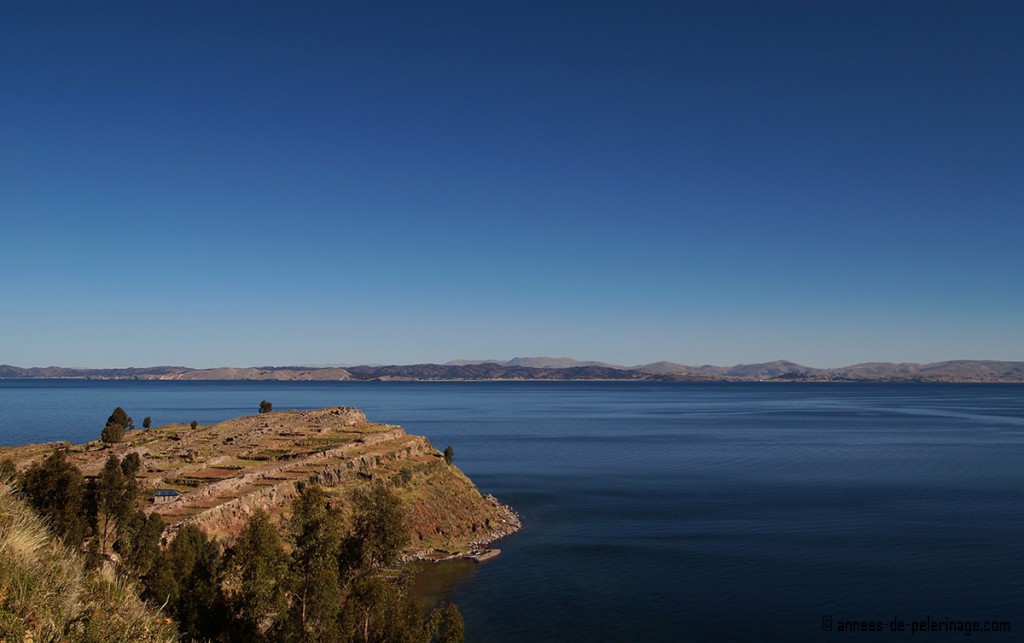
My boat arrives in a quiet cove on the southern and most secluded part of the 6 kilometers long island. Hardly a tourist ever gets to this part of Intika and so it feels a bit like stepping down in history. The scenery is just so overwhelmingly tranquil. Fields are arranged in elaborate terraces, much like the Inca did in ages past. Strangely enough, the vegetation feels very familiar, almost Mediterranean, even down to the sheep merrily bleating away in the distance.
Coca leafs for the newcomers
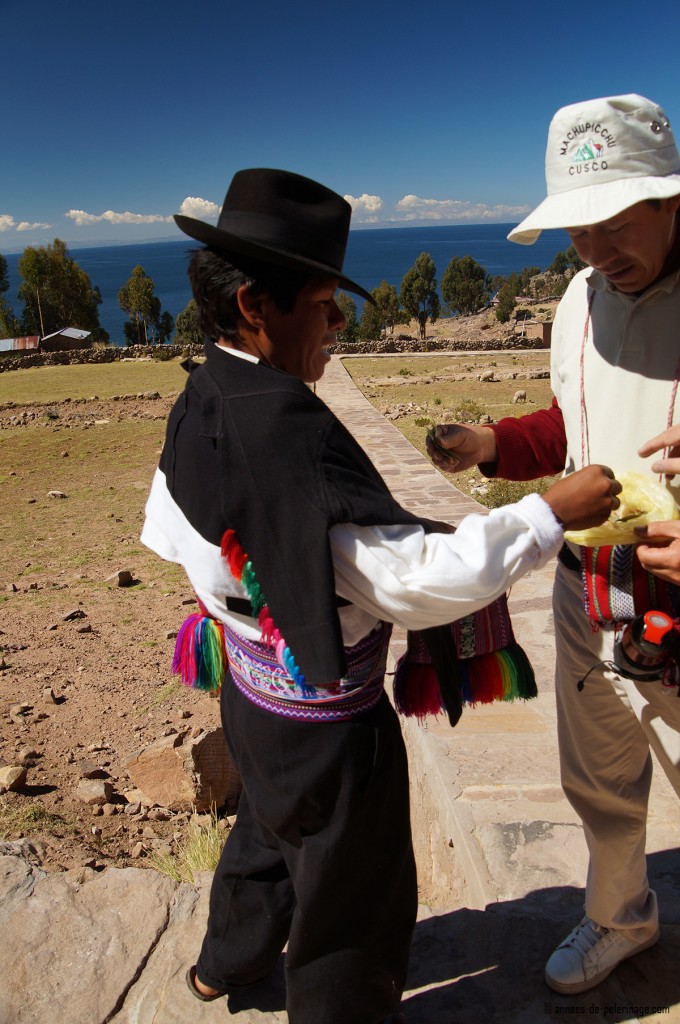
We are greeted by the head of the small community. Coca leafs are, as is the custom on Taquile, exchanged in generous amounts, with only a small portion making it directly into the chewing cheeks. The rest goes into a beautifully handcrafted pouch everyone around here, I will later learn, is carrying around. Coca is said to help against the altitude sickness. Even though Taquile is not exactly mountainous, it is not flat either and as an unaccustomed lowlander, you will feel the rarefied air with each labouring step. Does the coca help? Beyond the numbing effect quickly spreading around my tongue I am quite doubtful.
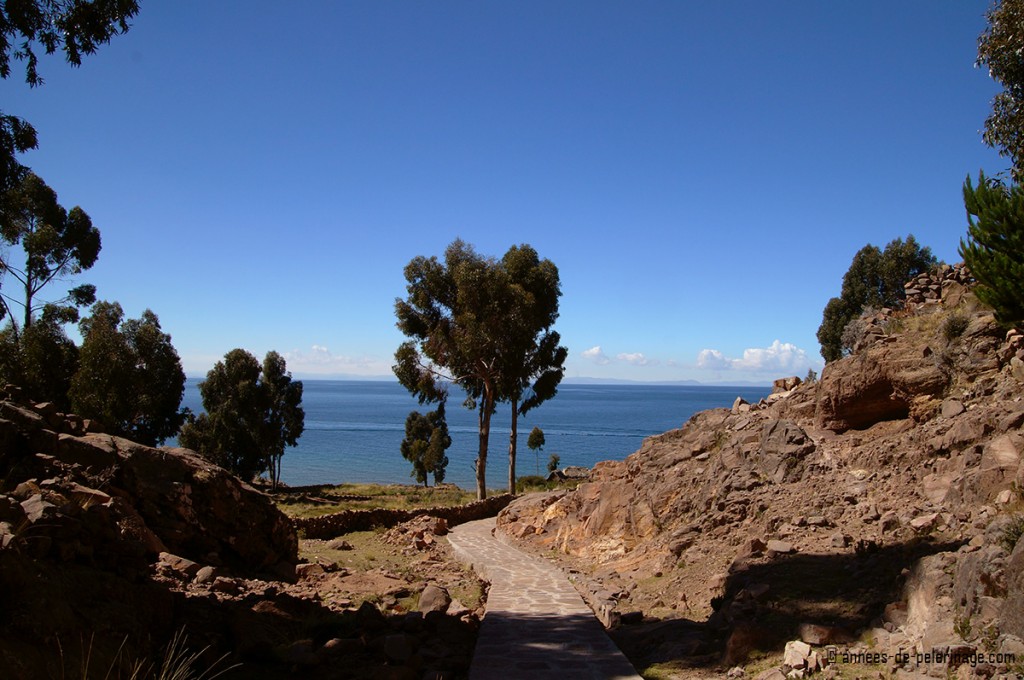
Taquile is one of the few spots on this planet where modern technologies are frowned upon. There are no cars and no scooters on the island, no electricity grid and no running water. Narrow pathways crisscross the landscape and interconnect the small villages. Even in the case of an emergency, the doctor, and his nurses will have to rush down those cobbled stones to reach their patient. As I walk around the picture perfect scenery, I do not get the feeling that the Taquileños are unhappy – quite to the contrary.
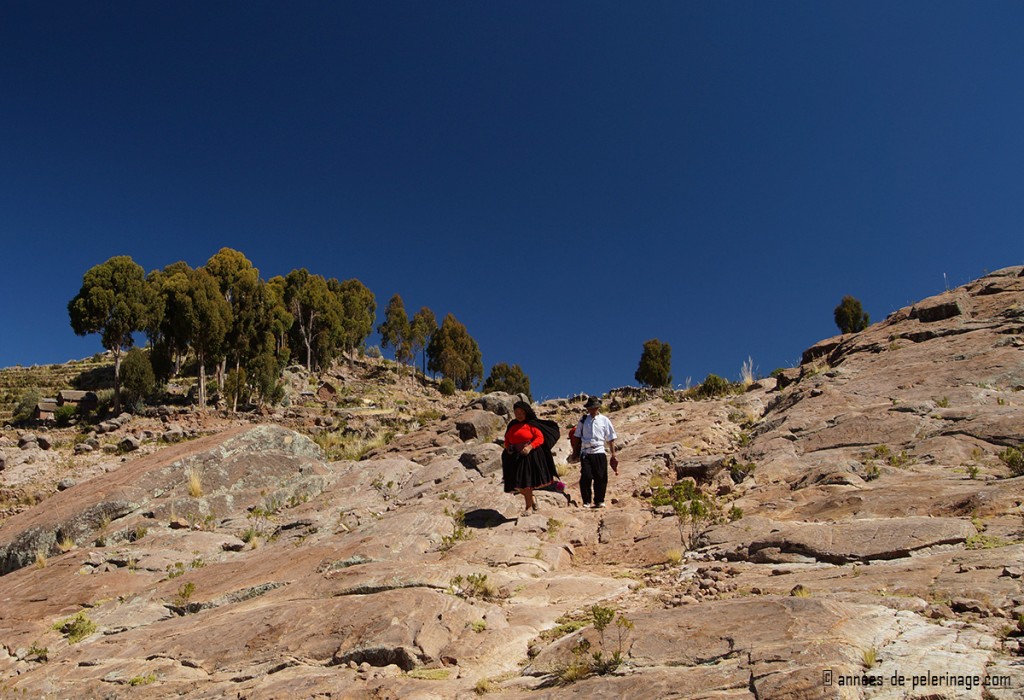 Puno is just an hour’s ride away, yet the community is thriving, with even the young people speaking Quechua and wearing the traditional clothes. Some might go to school or university far away, but most of them come back. I think the UNESCO’s decision to honour their tradition and customs in 2005 is to be thanked for that. The Taquileños are proud on their history and the few tourists that come generate that little extra income to make life pleasant.
Puno is just an hour’s ride away, yet the community is thriving, with even the young people speaking Quechua and wearing the traditional clothes. Some might go to school or university far away, but most of them come back. I think the UNESCO’s decision to honour their tradition and customs in 2005 is to be thanked for that. The Taquileños are proud on their history and the few tourists that come generate that little extra income to make life pleasant.
Who could fault them? Taquile is just so outstandingly beautiful and quiet. Had I the time, I would certainly have booked at least a night on the island. While there is no hotel, there are a number of guest rooms which the locals operate on a unique community-controlled tourism model. They might lack the comfort of my luxury hotel, but they convince with utter authenticity instead.
The famous male knitters of Taquile
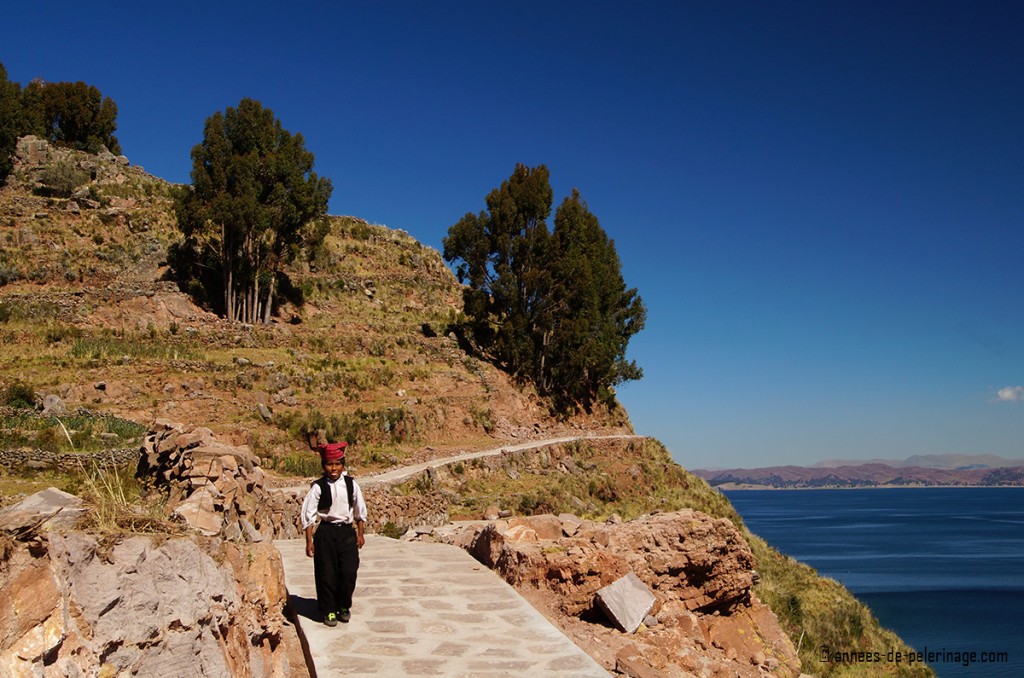
And talking about the authentic experience. Taquile is most famous for its woollen products. The techniques and patterns have been handed down through generations. Beginning at a very young age needlework is taught to boys. Not because of the meagre revenue they can make by selling their wares to tourists, but because it serves a very important social function.
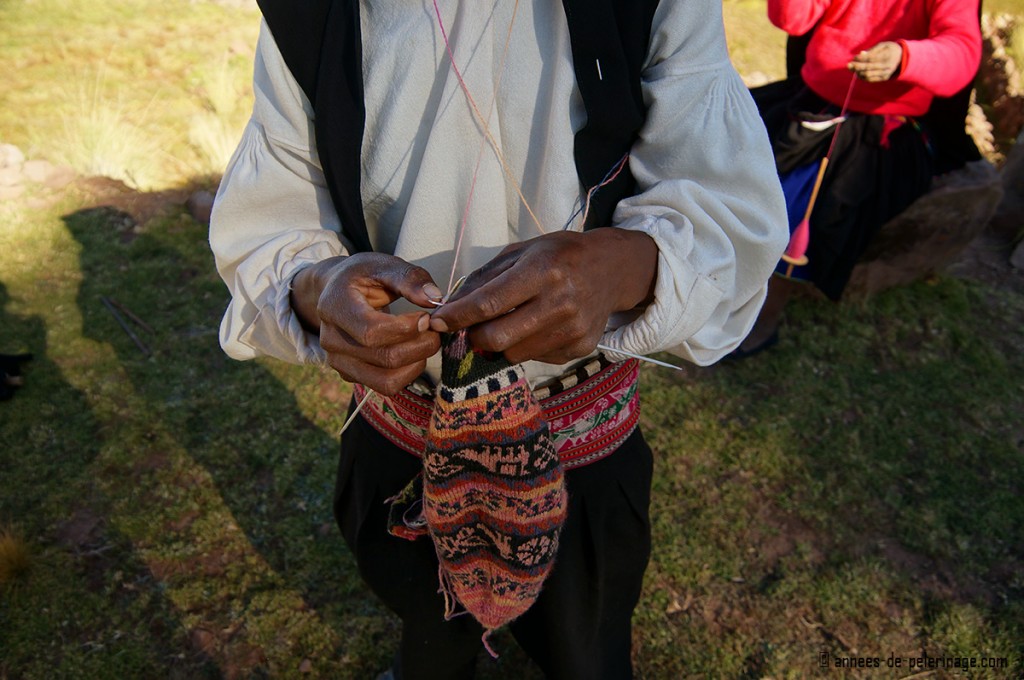
When a young man wants to marry a girl on Taquile, he is set with the task of knitting an extremely fine hat (not the one on this picture). This hat has to be presented to his future father-in-law. He will fill the hat with water and only if it doesn’t leak a single drop, he will consent to the marriage. Once engaged he will wear this hat for a certain time. Should his wife die, or he’ll become a grandfather or chief of the community, a different hat will have to be knitted by himself – all with the wire-thin needles and featuring the extremely elaborate patterns. The hat is a status symbol. Not one of material wealth, instead it tells of a lifetime of experience. It is little wonder that UNESCO thought these knitting techniques needed recognition (if you are wondering, what other sites make it to the UNESCO World Heritage list, check out this website).
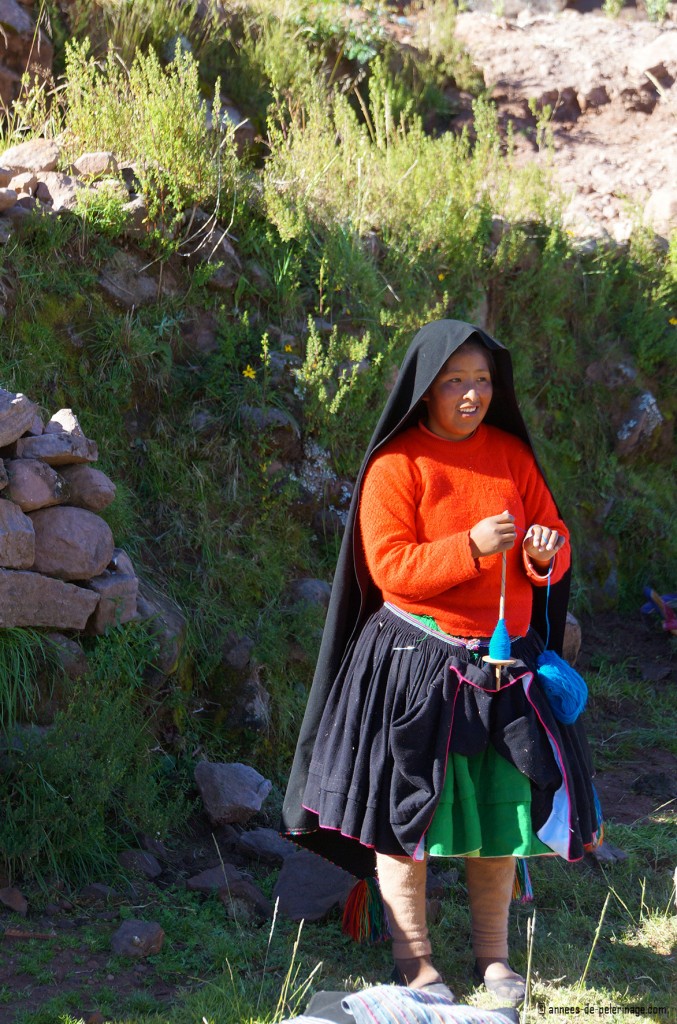
I’ll willingly concede that for us westerners knitting men are quite the spectacle, but you would wrong the women of Taquile by neglecting their handiwork. Yarning and weaving are left to them, and their crafts join in the increasingly complex social patterns on Taquile.
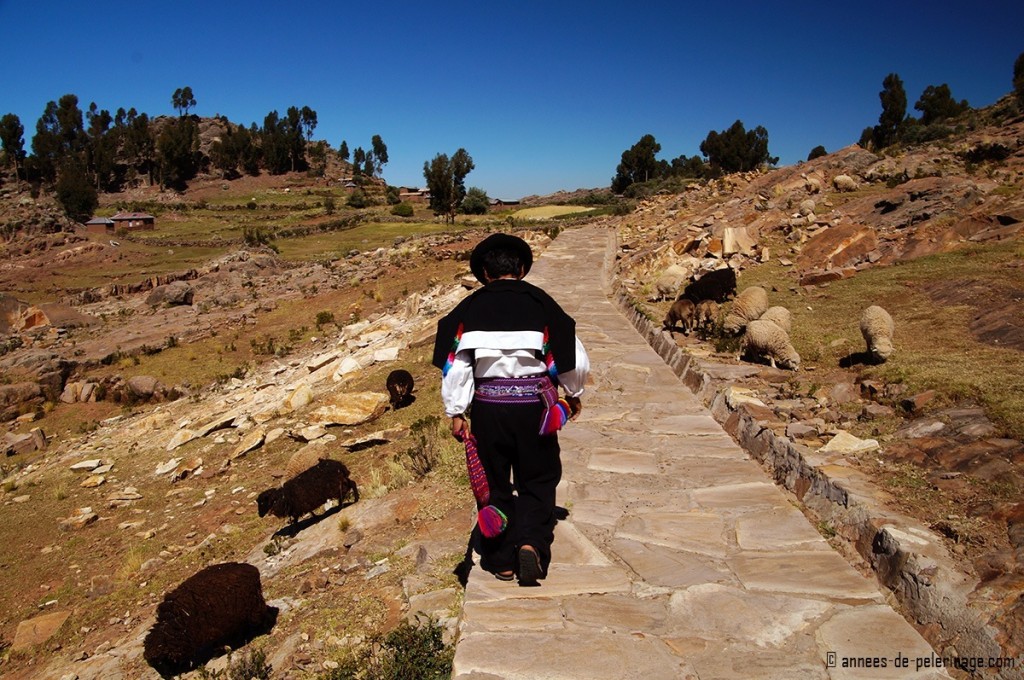
Like the men knit their water-proof engagement hats, the women have to weave two special belts for the men. One is very sturdy but looks rather simple. I am quite amazed when my guide reveals to me that the first belt women weave for their future husband are made from their own long black hair, which they have to cut for this purpose upon a successful engagement. A young couple will have to live two years together before they are allowed to marry, and it is during this time the women have to finish their weave. This hair belt serves as a padding for the second, way more elaborate belt all males wear on top of the first belt and will have to last a lifetime.
Into the second belt, the future wife will weave her demands and wishes from her soon to be husband – a rich harvest, children, a house, cattle, firewood, and the tools needed for their trade. This waistband will be organized much like a calendar, with each wish being associated with a certain season of the year. (If you look closely, you can see a black and white belt underneath the purple one – that’s the one made of hair.)
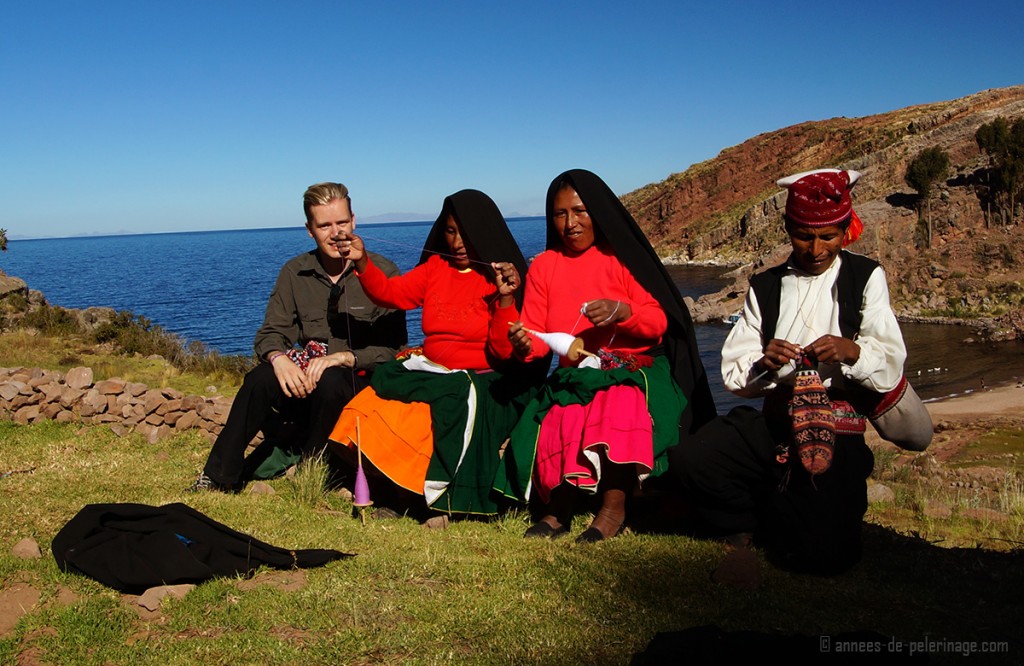
Coming from a modern city, where track pants and overlong t-shirts are the latest fashion hype, I cannot but marvel at the beautiful textile art of Taquile. Each item has a wonderful meaning, yet there is nothing garish about their attire. The colourfully knitted accessories form a pleasing contrast against the black and white backdrop of their shirts and pants. You can definitely feel the Spanish influence, but quite obviously their crafts go beyond anything you would see in Europe.
Taking a tour around the island of Taquile
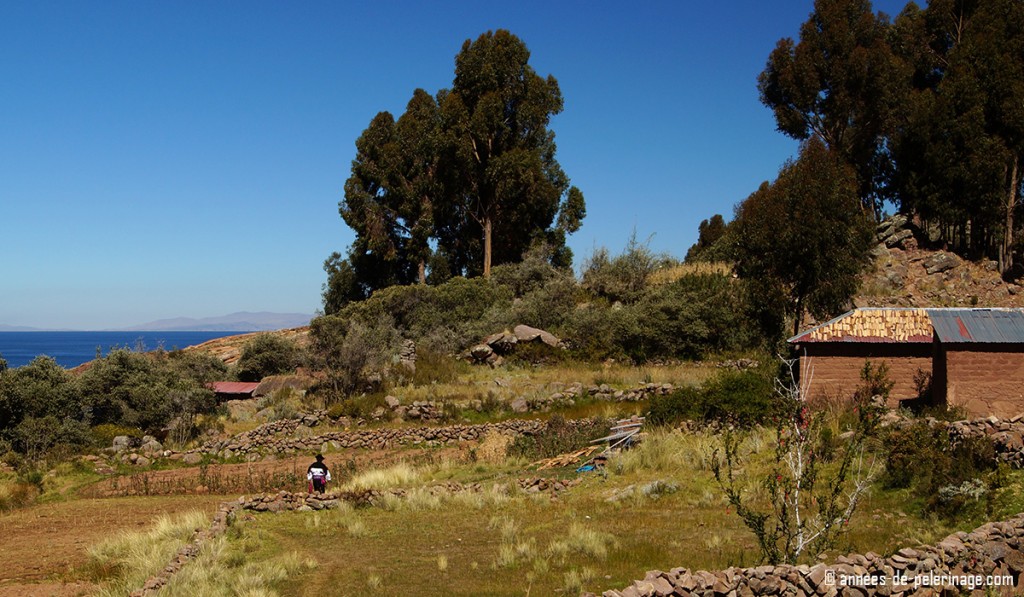
I know I probably wouldn’t feel comfortable on Taquile for a longer period of time. I’m too used to all the pleasantries modern gadgets offer. Cooking on an open fire might be quite romantic, but as soon as we are talking about laundry or cleaning the house, I wouldn’t want to do this the non-electric way like the women from Taquile.
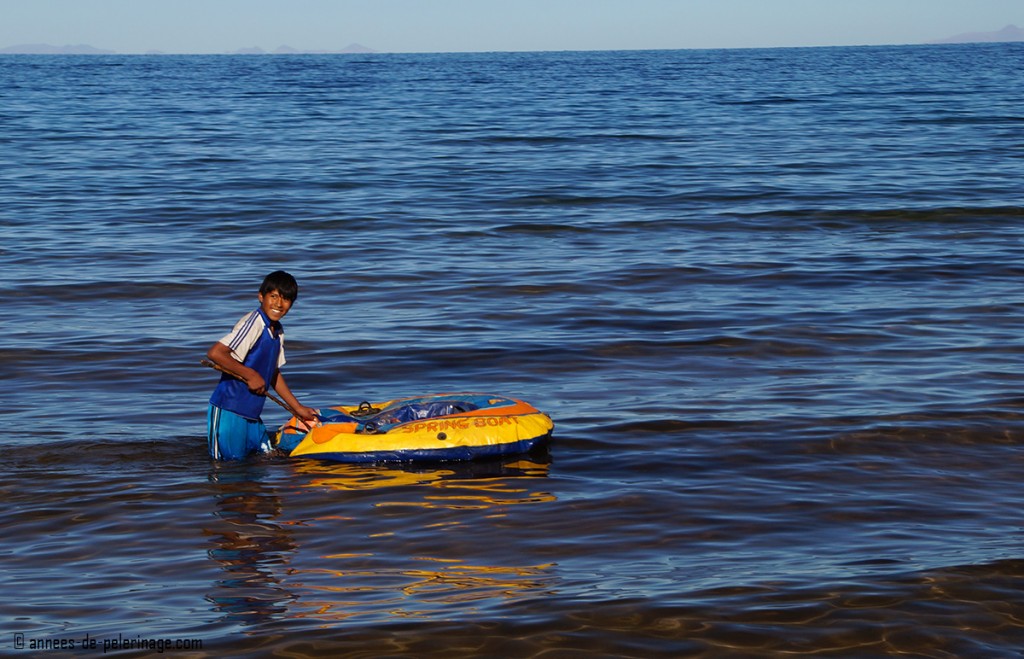
Despite all this, I feel quite grateful that I am in the unique position of visiting this community. When you have travelled as much as I did, you become quite wary of all the tourist’s traps scattered around the globe. The southern part of Taquile really feels special and it makes me hope that these communities find a way to preserve their way of life. As I walk down to the beach, which is surprisingly sandy, I notice a group of boys playing in the waves. Intrigued I approach. Their playful pranks among the cold water of Lake Titicaca reminds me once again how very protected this island is.
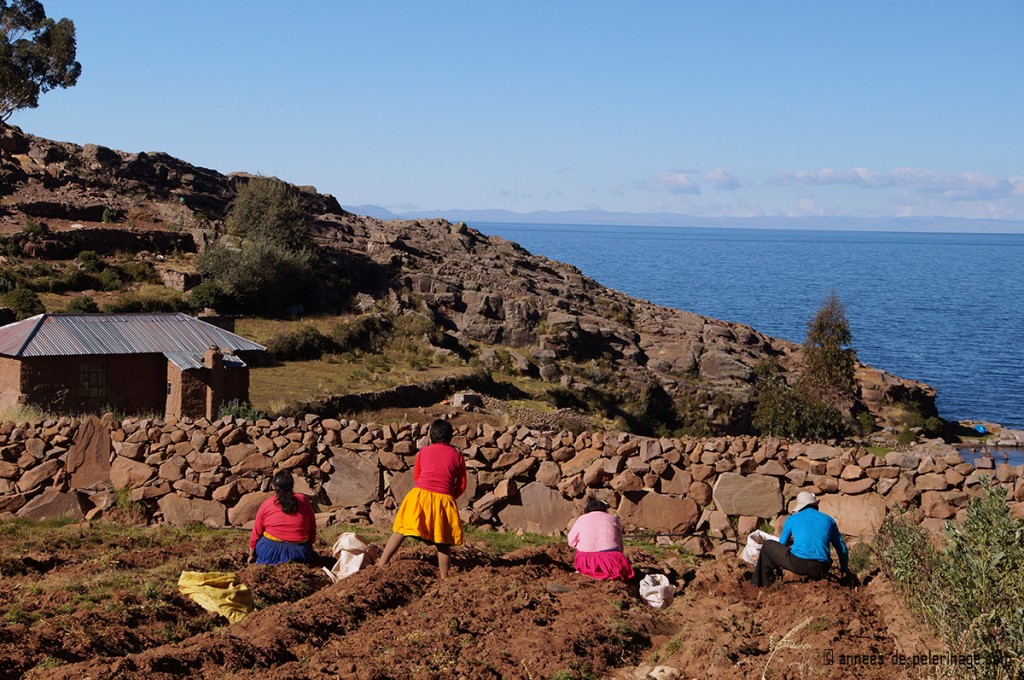
As I walk around the islands, I pass along a group of men and women working the fields. It’s harvest time and everyone needs to help to retrieve the bounty from Pachamama’s soil. Pachamama is the mother of earth and time and is still revered on the island, despite most of the people on Taquile being catholic.
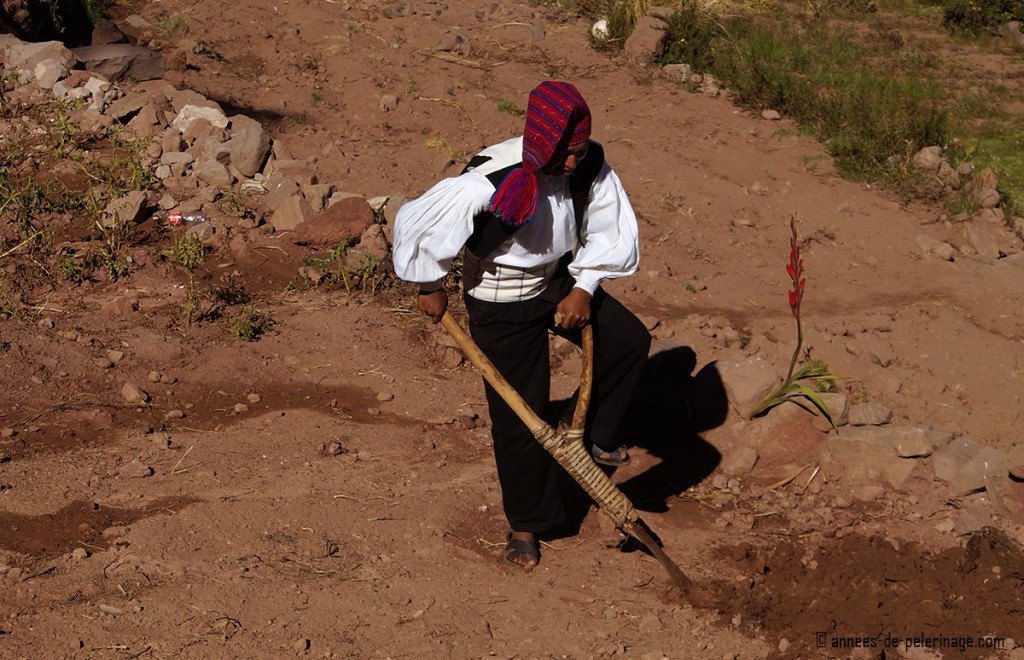
Perhaps it is quite interesting to note that on Taquile harvesting and planting is still done the way the Inca must have done it 500 years ago. The hard, yet fertile soil is worked with primitive tools that are, all things considered, quite efficient on the small terraced fields.
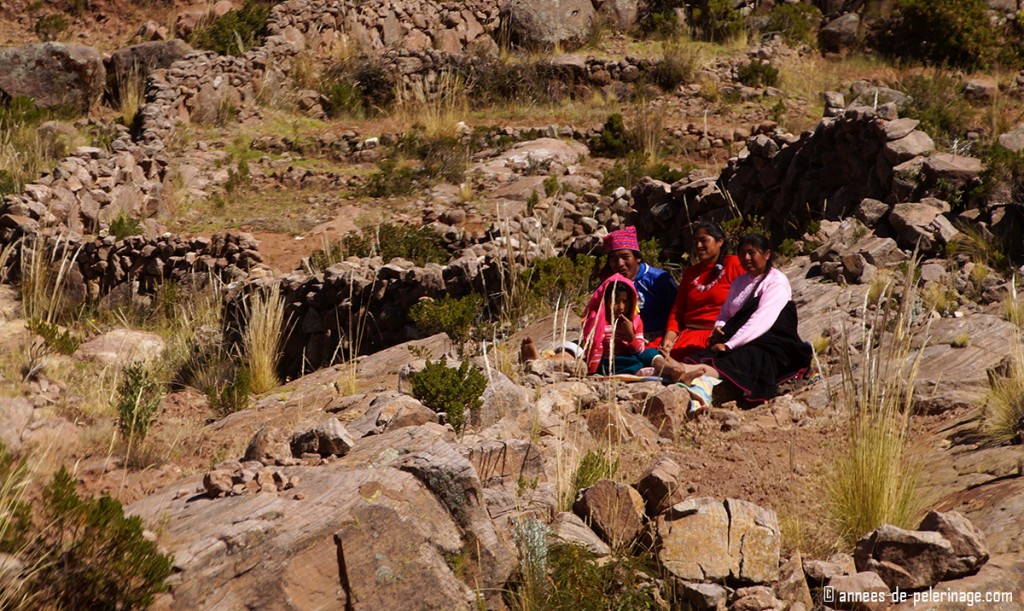
Make no mistake, though, field work is exhausting. The locals might be accustomed to the height but the intense sun alone is quite taxing. So it is no small wonder that time is measured a bit different on Taquile Island. Every so often I see groups of people resting on the sides of their fields. What are they chatting about, I wonder? My best guess would be that blond guy staring at them with the lens of his camera. I’m quite surprised that the Taquileños are not shy at all when I ask them for permission to take pictures. Nobody asks me for money (a practice quite common in mainland Peru), though they won’t say no to some coca leafs. It really has the feeling of a very happy people.
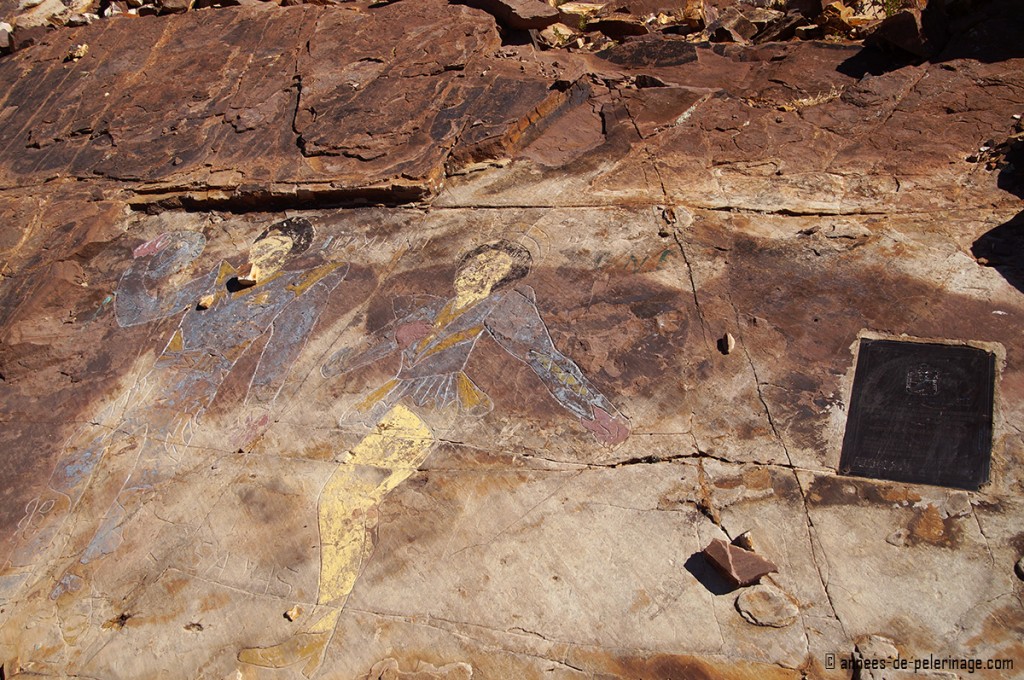
While walking the meandering pathways I finally spot some elaborate carvings in the rock. These depictions of saints and folklore, my guide is quick to point out, have been rendered by the workers of the very pathway I am standing on right now. Some of them are a couple of hundred years old, others new and very shiny, yet they all seem to beg for protection and durability.
Saying goodbye to Taquile
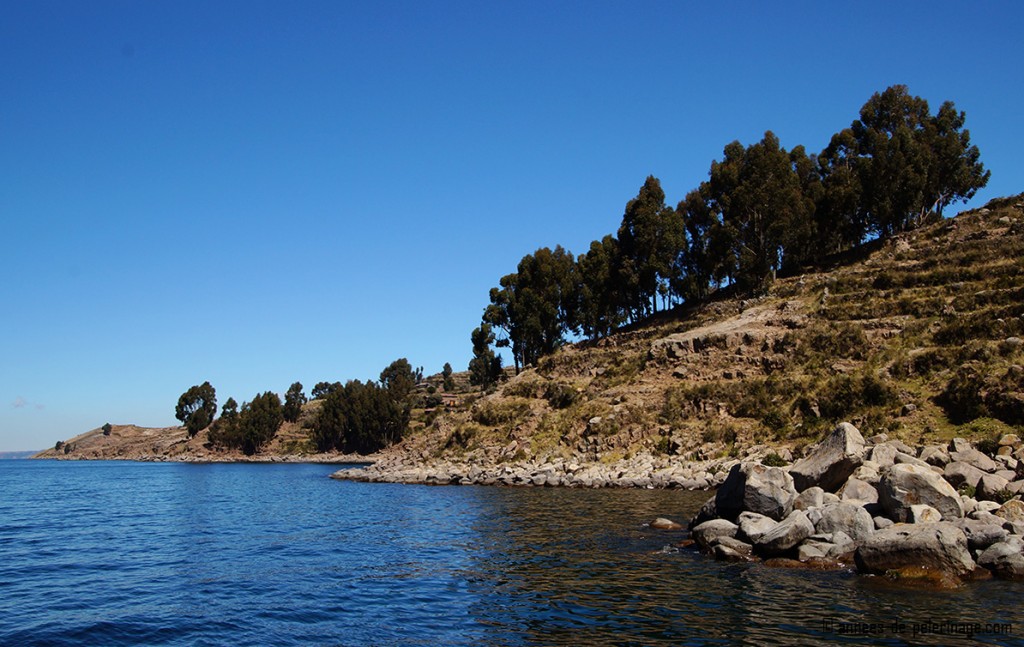
I’m quite reluctant when my guide finally tells me it’s time to leave Taquile. The island has been a big surprise. The landscape, the people and even the food I enjoyed during my all too short stay have been a big surprise. Of course, I did my research before coming to Peru and knew Taquile Island would be a good investment of my precious time (Check out my itinerary for Peru here). But reading about a place and actually feeling it are two things altogether. I’ve been to a lot of places where the pictures I found on the internet had been all so very convincing while in reality, it was all a bit less inspiring – especially all the things that hadn’t made it on the picture. Taquile definitely is different.
So if you can, I strongly urge you to visit Taquile. But do not waste your time visiting the touristic main square of the islands, where most tourist agencies will drop you off. Rather take your time and walk around the island. Talk to the locals, learn to spot the differences in the various communities on the islands and enjoy the picture perfect landscape.
Would you visit Taquile to see the male knitters of the islands? Tell me your thoughts in the comments below!
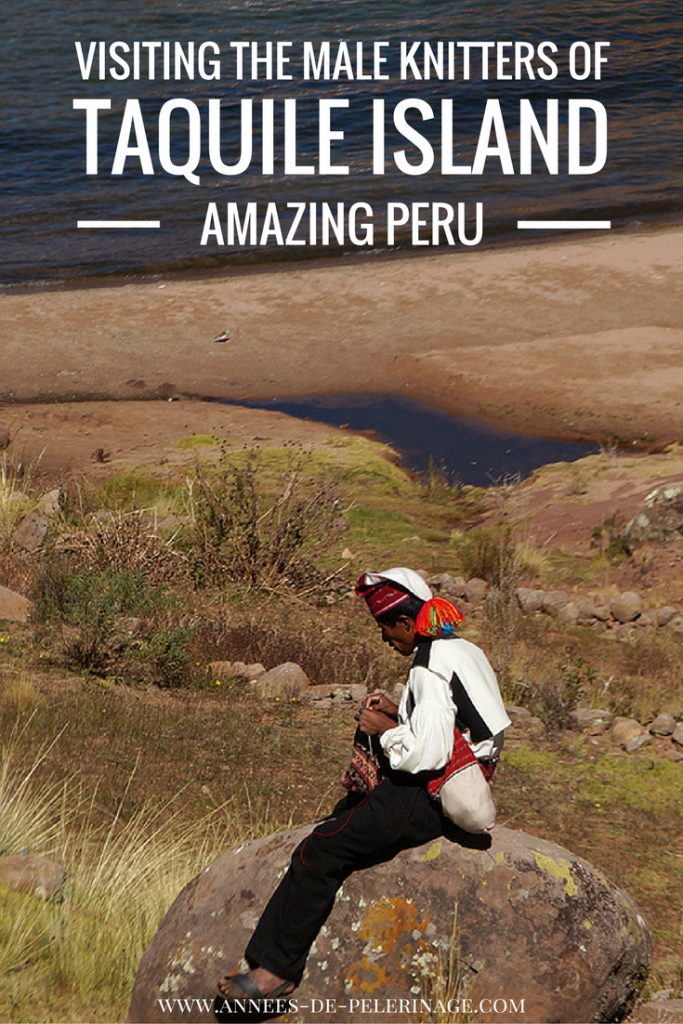


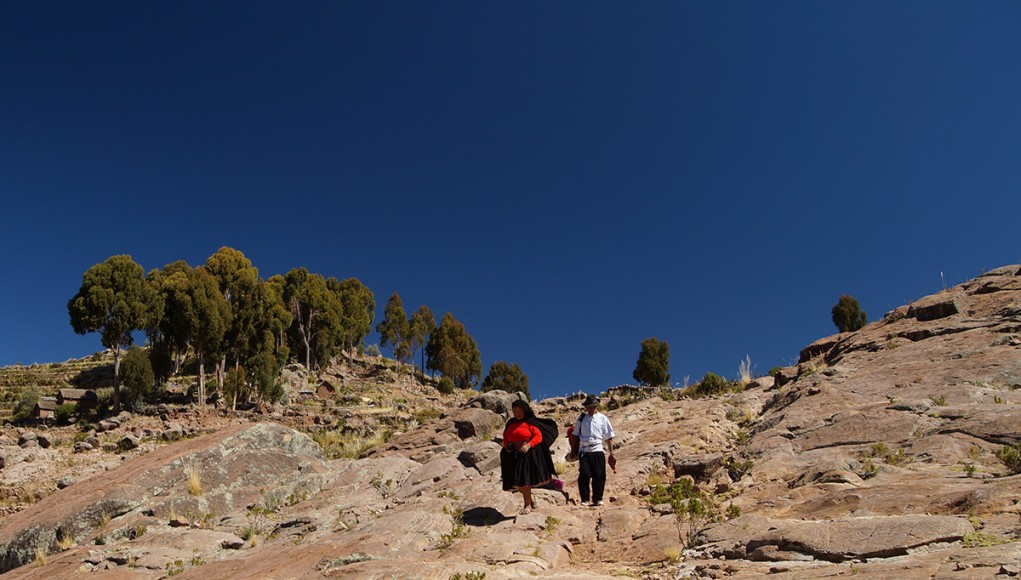
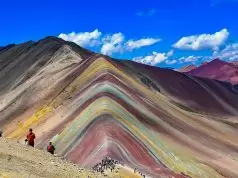
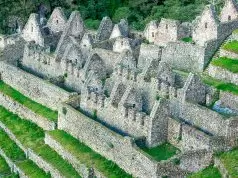
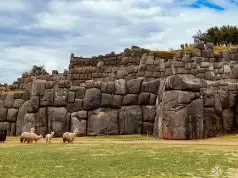

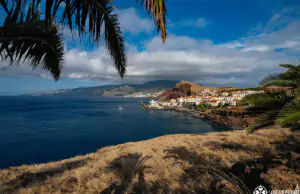
There is a great deal of appeal to Taquile Island. I’d rather spend a much longer time and work with the people there. I’m a spinner, too. Add to that, that I knit. It would be quite the learning experience.
That is a wonderful idea, Mary! I tried to knit with them as well – but they do use different techniques. A bit like English throwing – obviously everything multicolored with 4 or 5 different colors. Does get confusing. Especially on needles no thicker than a toothpick.
The best thing I’ve read on the Internet for a long time. It makes me feel like there’s hope in the world and that not all is lost. Hope I could visits omega day soon. I’ve planed a trip to Machu Pichu in september, wish I had time to visit Taquile :(
Thank you so much Meriely! To be fair – Machu Picchu is outstanding. BUT i found Peru to be much, much more than just the famous Inca ruins.
Went to taquile in 2000 stayed on amantani two. Nights. Then visit to taquile then back to puno we nearly died on boat trip back to puno went through massive storm I really believed I was gonna. Die and be buried. At bottom of lake but what an experience I had I loved Peru xx
What a beautifully written travelogue. My upcoming visit to Peru is already planned out to the hilt, but I will certainly add this idyllic spot for a future trip.
Thank you so much Babs!
Make sure to bring up enough time so you don’t end up in the tourist harbor, tho!